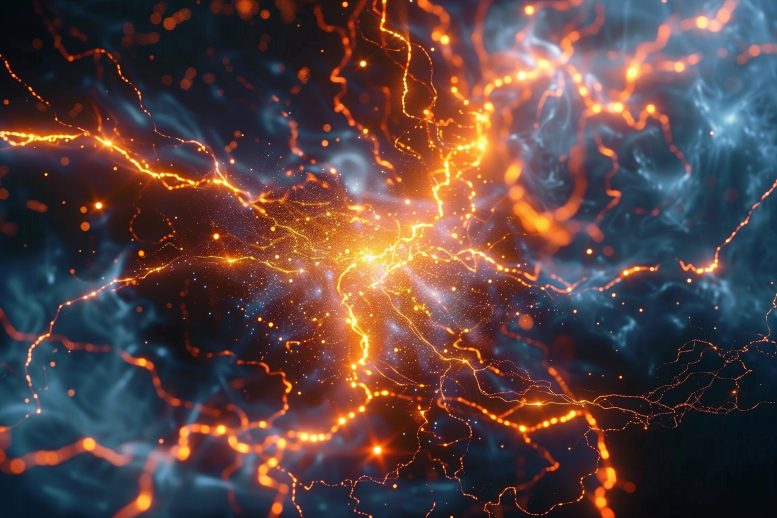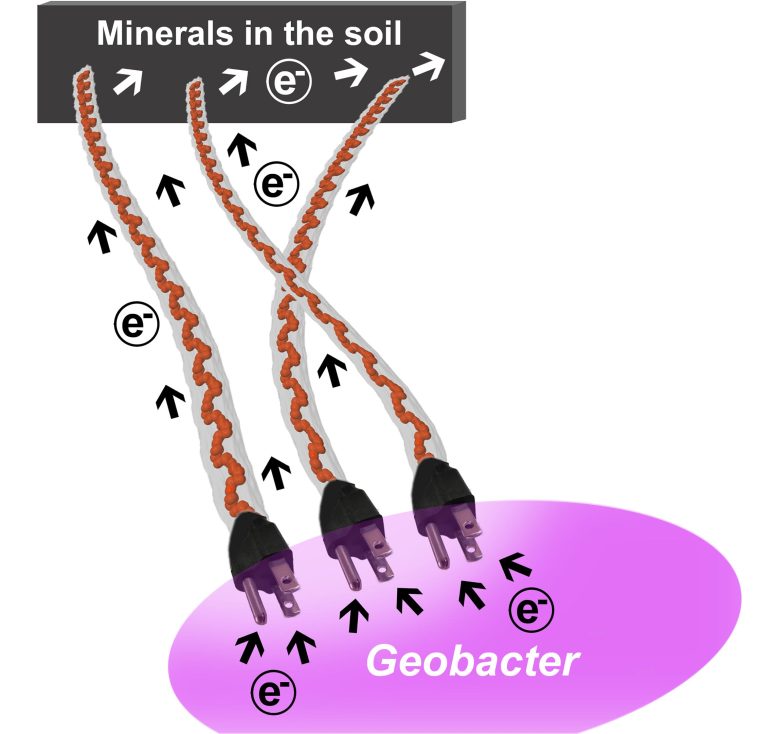
Soil bacteria use proteins to power nanowires, forming an underground electrical grid that supports life and impacts methane emissions.
To “breathe” in an environment without oxygen, bacteria in the ground beneath our feet depend upon a single family of proteins to transfer excess electrons, produced during the “burning” of nutrients, to electric hairs called nanowires projecting from their surface, found by researchers at Yale University and NOVA School of Science and Technology, NOVA University Lisbon (NOVA-FCT).
This family of proteins in essence acts as plugs that power these nanowires to create a natural electrical grid deep inside the Earth, which enables many types of microbes to survive and support life, said co-senior authors of the new study Nikhil Malvankar, associate professor of Yale’s Molecular Biophysics and Biochemistry Department and Microbial Sciences Institute, and Carlos Salgueiro, Full Professor at NOVA-FCT.

The Science of Survival: Microbial Nanowires
Malvankar’s lab and Salgueiro’s lab have extensively studied the components of this microbial electrical grid. However, it was unclear how bacteria can transmit excess electrons produced by metabolic activity into nanowires projecting from their surface and connecting with minerals or neighbors. They found that many kinds of soil bacteria depend upon a single, widespread family of cytochromes inside their bodies to charge nanowires.
Environmental Impact and Future Potential
Understanding the details of this nanowire charging is important for the potential development of new energy sources and new biomaterials and its impact on the environment. Malvankar and Salgueiro note that microbes absorb 80% of methane in the ocean, a major contributor to global warming, emitted from ocean floors. However, microbes on Earth’s surface account for 50% of methane emissions into the atmosphere. Understanding different metabolic processes might help mitigate methane emissions, they said.
The research was reported in the journal Nature Communications. This work was led by co-first authors Pilar Portela and Catharine Shipps, along with Cong Shen and Vishok Srikanth.
Reference: “Widespread extracellular electron transfer pathways for charging microbial cytochrome OmcS nanowires via periplasmic cytochromes PpcABCDE” by Pilar C. Portela, Catharine C. Shipps, Cong Shen, Vishok Srikanth, Carlos A. Salgueiro and Nikhil S. Malvankar, 20 March 2024, Nature Communications.
DOI: 10.1038/s41467-024-46192-0